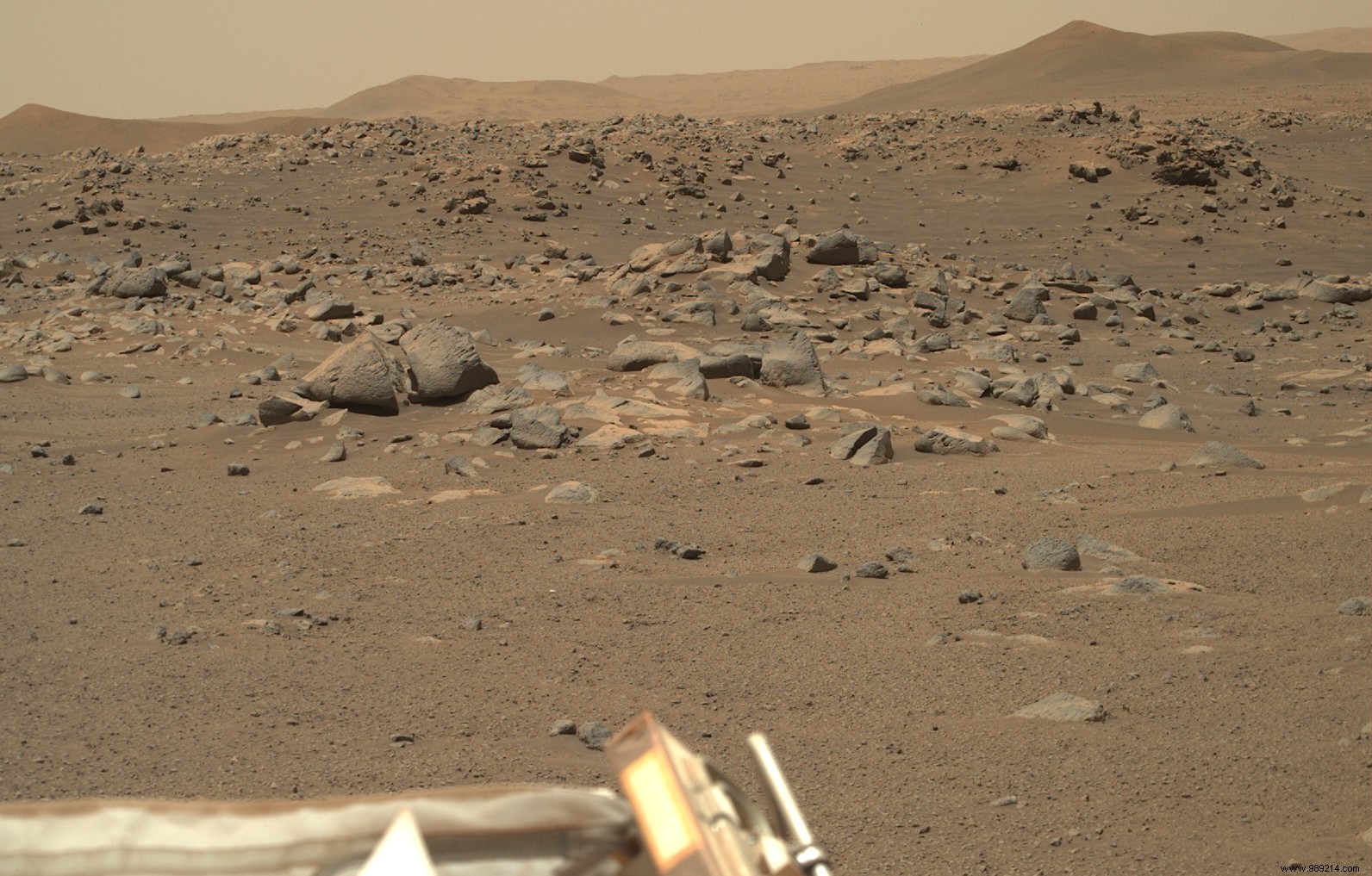According to a NASA-led team, Mars may harbor an underground microbial ecosystem capable of surviving on chemical activity fueled by radioactivity. The only condition would be that the water is present, which has not yet been proven.
To find traces of past life on Mars, researchers have long looked at waterborne sediments that may have accumulated over time. On Earth, such habitats have indeed preserved abundant evidence of ancient life. However, Mars, once Earth-like, has since evolved into a cold, dry world with no magnetic field or atmosphere.
Also, for several billion years, dust storms, solar winds and other cosmic rays have constantly ravaged the surface of the red planet, destroying almost all hope of seeing life s 'develop there.
According to Jesse Tarnas, planetary scientist at NASA's Jet Propulsion Laboratory, some of this life may have found refuge underground . Radioactive elements could disintegrate water molecules there, producing ingredients capable of fueling life underground. This process, known as radiolysis, has supported bacterial communities in water-filled fissures and pores in rock on Earth for millions of years.
Examining the Martian subsoil could therefore help researchers find out if life could have survived there. In a recent study, Jesse Tarnas and his team relied on Martian meteorites that crashed on Earth after being expelled from their planet.
For this work, the team assessed the grain size, mineral composition, and abundance of radioactive elements in these meteorites to estimate the porosity of the Martian crust at the time of their detachment. Using a computer model, they then investigated whether the radiolysis process could be efficient enough to generate hydrogen gas and sulfates, chemical ingredients capable of fueling the metabolism of underground bacteria. /P>
Results published in the journal Astrobiology suggest that if water were indeed present, radiolysis in the Martian subsoil could have sustained microbial communities for billions of hours. years, and maybe still today . According to the authors, up to a million microbes could exist in a kilogram of rock . The "most habitable" meteor samples also appeared to come from the southern highlands of Mars, the oldest terrain on the planet.
This Martian radiolysis process had already been studied in the past, but this is the first estimate based directly on Martian rocks to quantify the underground habitability of the planet.

Thus, subterranean life as described by this research would need water. Unfortunately, for the time being, it is still unknown whether pockets of groundwater persist on the planet. A few months ago, researchers suggested the presence of possible isolated bodies of liquid water under the surface of Mars. However, a study recently pointed out that they were probably layers of clays. But all is not lost!
If Mars was once home to a lot of liquid water, it is now accepted that these water molecules unable to stay on the surface due to the loss of the Martian magnetic field escaped into space. As part of a study, however, a team of researchers recently established that some of this water may actually have incorporated minerals from the Martian crust. According to them, at least 30% of the original water is actually still there.